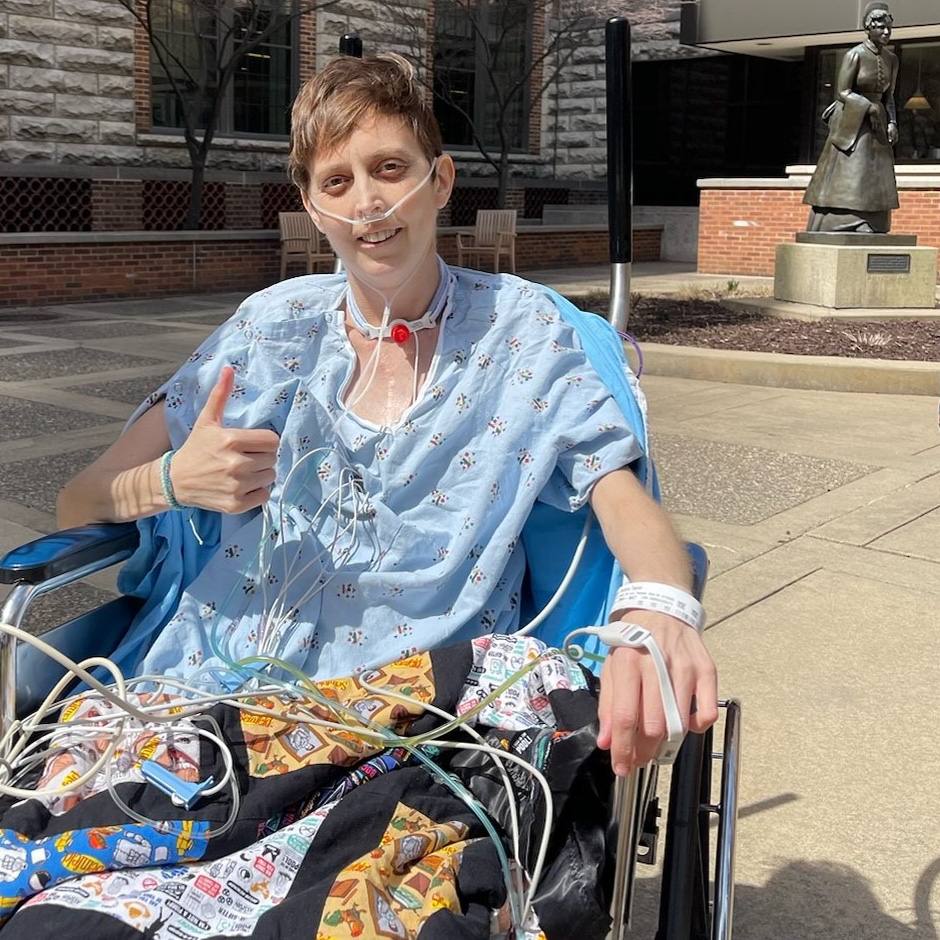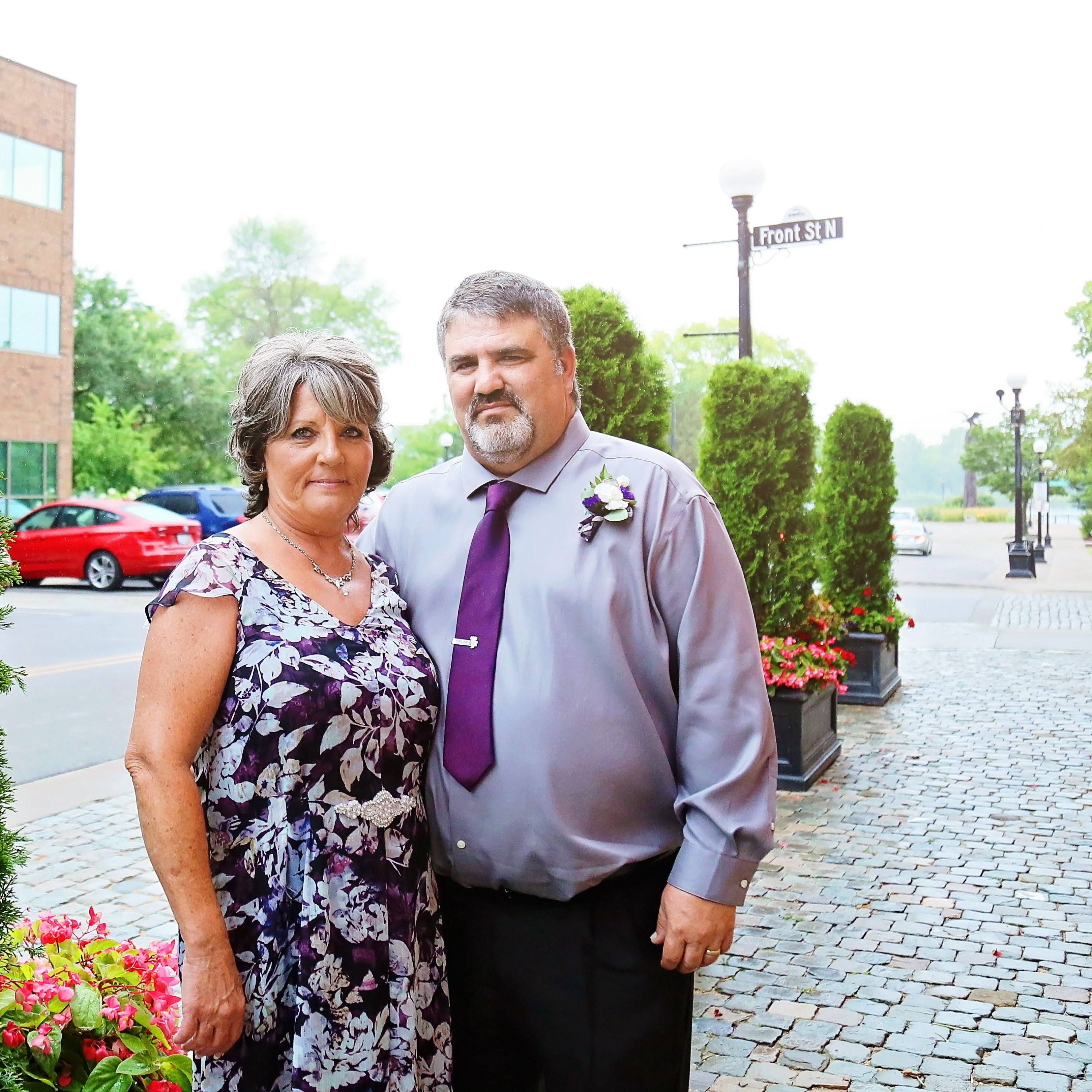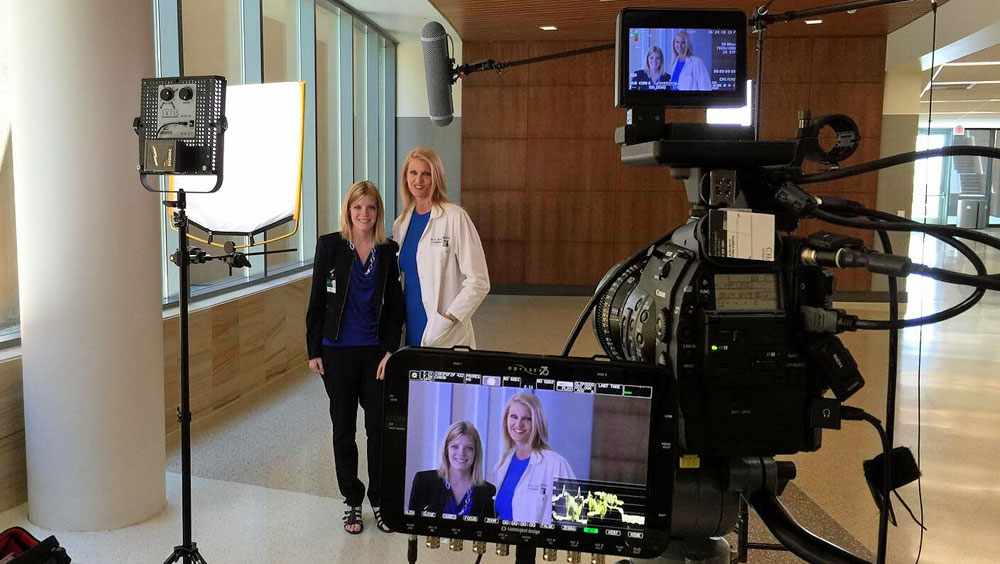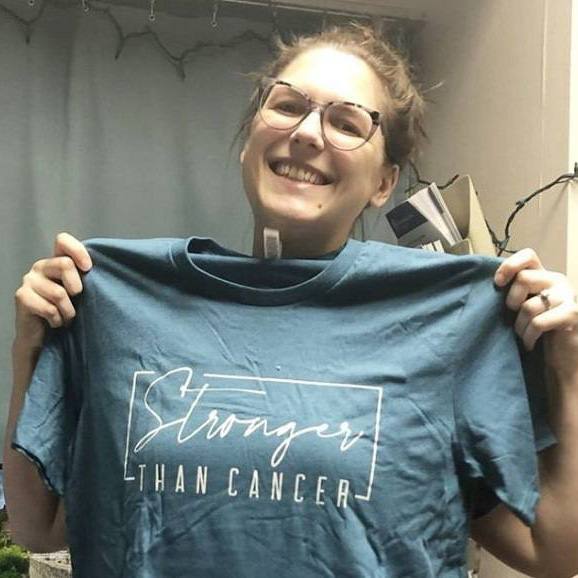-
Sharing Mayo Clinic
Surgery for Sunken Breastbone Reshapes Patient’s Chest, Shapes Career Path
“My chest just has a dent.” “Everyone is unique, and this is simply the way I was made.”
This is what I told myself growing up, being unaware that I had a congenital chest wall deformity known as pectus excavatum.
As a sophomore at Temple University in Philadelphia pursuing a marketing degree and with a passion for extreme sports, I didn’t have time to consider that something could be wrong. Then one day, a family member in the medical field urged me to research the impact the dent in my chest could be having on my heart.
I started Googling “dent in chest” and “funnel chest” and discovered the term “pectus excavatum.” I noticed that my chest looked similar to the diagrams of this condition on Mayo Clinic’s website. During my research, I discovered a YouTube video of Mayo's Dawn Jaroszewski, M.D., explaining pectus excavatum and the technique for surgical correction. She described placing two or more stainless steel bars under the ribcage to elevate the chest. Like braces that reshape the mouth, these bars reshape the chest, and they are left in for a period of up to three years.
Judging by other sources, I could see Dr. J (as Dr. Jaroszewski is commonly called) was a leading expert in the field and had more experience than most surgeons. Every year, people from around the world travel to Mayo Clinic's Arizona campus to have their dents corrected under her expert hands.
I decided to call her office to get more information. Her staff was more knowledgeable about the condition than anyone I had ever spoken to about it.
"Viewing the scan was a dose of reality. I could see my sternum crushing my heart."
The first order of business was to register with Mayo Clinic and complete the preliminary testing, which included, among other items, a CT scan. Viewing the scan was a dose of reality. I could see my sternum crushing my heart. Dr. Jaroszewski’s office later explained that if left untreated, it could cause cardiac issues as I got older. Suddenly, my inability to take a deep breath or run alongside my friends made sense. My heart simply didn’t have the room to function, and my lung capacity was restricted.
It was at that point that I realized how serious my chest wall deformity was, and that I wanted Dr. J to fix it, because she would give me the best result possible.
After all of my testing was completed locally, I sent out the reports to Mayo Clinic for Dr. Jaroszewski to evaluate. Her office set me up with a surgery date over the summer, so as to not interfere with my college classes.
My family thought I was crazy flying all the way from Philadelphia to Phoenix just for a surgery. They encouraged me to seek alternative surgeons who were closer, but I strongly felt that other surgeons simply weren’t experienced enough. In the end, it was my choice to undergo this transformation knowing I would be in the most experienced hands and receiving care at one of the best facilities in the world. No one could convince me to consider any other alternatives.
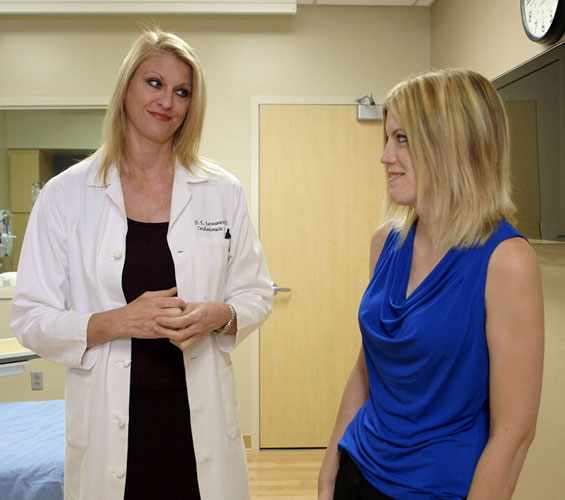 A few months later, I was in Phoenix meeting Dr. Jaroszewski, Kelly Myers (her pectus coordinator), and their team the day before my operation. Dr. Jaroszewski was confident in her ability to correct my complex deformity. She explained everything in detail while remaining entirely relaxed. After leaving the consultation, I was excited for the operation.
A few months later, I was in Phoenix meeting Dr. Jaroszewski, Kelly Myers (her pectus coordinator), and their team the day before my operation. Dr. Jaroszewski was confident in her ability to correct my complex deformity. She explained everything in detail while remaining entirely relaxed. After leaving the consultation, I was excited for the operation.
I remember being wheeled into the surgery, but not much else, until waking up in a peaceful room with a white abdominal binder wrapped around my chest and multiple intravenous lines delivering pain medication.
The care I received at Mayo Clinic was phenomenal -- everyone from the nurses to the doctors were extremely attentive. When the nurse took off my binder, I was overcome with emotion. It never occurred to me how bad my dent looked until it was no longer there. My chest looked normal.
Two days later I was on a flight back to Philadelphia, eager to resume my college education.
The recovery from the operation wasn’t easy, as having your entire chest reconstructed is a challenging process. There will always be good days and bad days. The important part is to keep moving forward. The follow-up care I received from Dr. Jaroszewski, Kelly and the entire team was excellent. They answered every question I had along the way and explained that my symptoms were typical.
I slowly began resuming a normal lifestyle while promoting awareness of pectus excavatum and the remedies available, just in time for the start of my next semester.
Dr. Jaroszewski got me interested in biomedical marketing and has inspired me to help others through her exemplary leadership. She transformed my life by not only performing the surgical correction but by being a powerful, inspirational female leader in a typically male-dominated realm. She consistently leads by example by challenging the process and transforming the way cardiothoracic surgeries are performed.
Since my initial operation, I have become an advocate for pectus excavatum awareness and have integrated it into my academic studies by pursuing degrees in marketing (focusing on health care) and leadership. When I am not doing typical classwork, I am staying current with new medical advances and helping other patients through the surgical process by moderating an online support network.
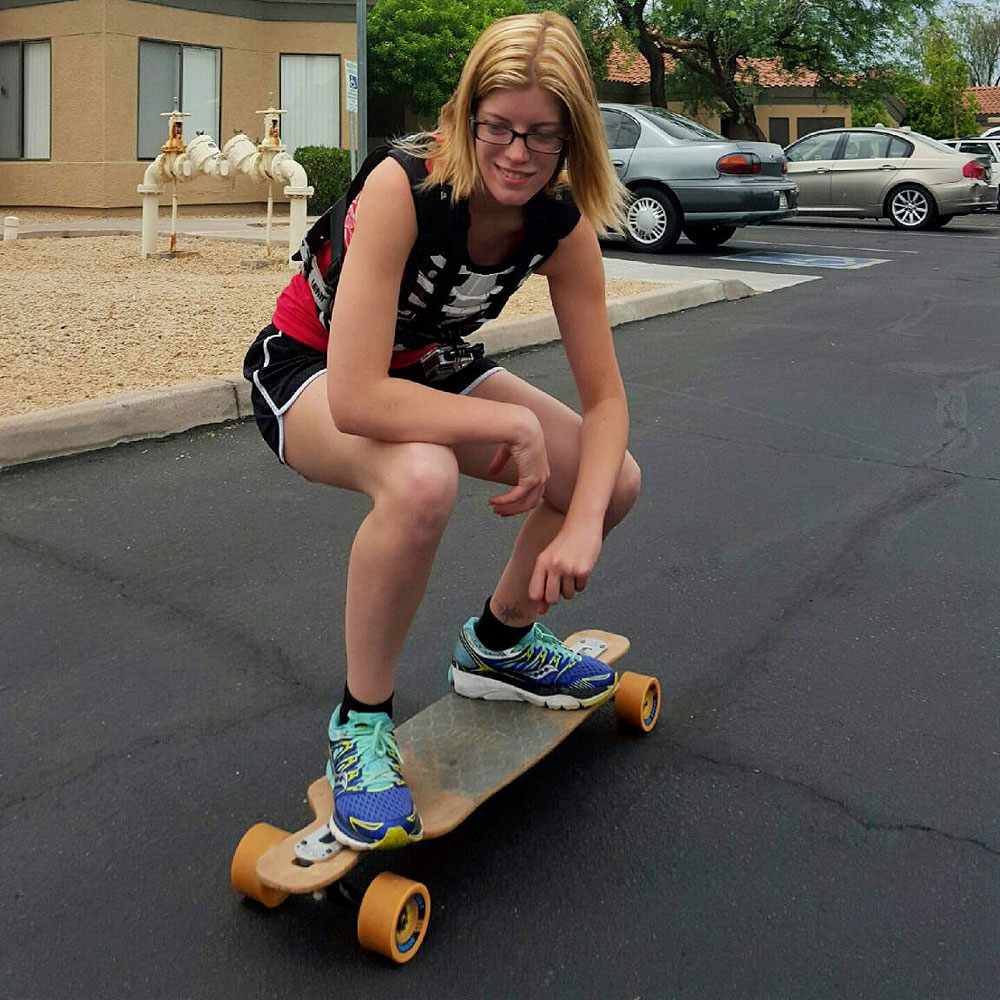 The moment I realized how much the surgery had improved my quality of life was when I was on the running track. My perception of this new reality was altered when I was starting to run instead of jog. Anticipating the normal shortness of breath, I didn’t push too hard. I remember feeling the barrier that once held me in place disappear, as I realized what was holding me back wasn’t a high heart rate or shortness of breath but was pain in my legs – just muscular pain, nothing more. With that, I began to run without stopping, knowing I would succumb to muscle fatigue long before my bars would ever hold me back.
The moment I realized how much the surgery had improved my quality of life was when I was on the running track. My perception of this new reality was altered when I was starting to run instead of jog. Anticipating the normal shortness of breath, I didn’t push too hard. I remember feeling the barrier that once held me in place disappear, as I realized what was holding me back wasn’t a high heart rate or shortness of breath but was pain in my legs – just muscular pain, nothing more. With that, I began to run without stopping, knowing I would succumb to muscle fatigue long before my bars would ever hold me back.
Since then I have taken up running as a sport, completing my first 5k last spring, and placing third in a long distance skateboarding race shortly thereafter. Undergoing this corrective surgery has allowed me to push beyond my previous limits and achieve results I never thought possible.
This summer, I am interning with Mayo Clinic, under the guidance of Dr. Jaroszewski and Kelly Myers, to help develop their marketing program through the use of online resources, and creating a new set of videos that will guide patients through each step of the surgical process, from preliminary tests through post-op. It has been a once-in-a-lifetime experience to work with the surgeon and team that made my physical transformation a joyful reality while assisting with projects to help future patients.
When I return for my senior year of college, I will be able to bring back an experience like no other – starting off as a patient with a complex chest deformity, to being able to give back to the community that supported me, and finally interning with the surgeon who transformed my life.
In every aspect, Dr. Jaroszewski has gone above and beyond – from transformative surgery, passing on valuable leadership skills, and providing me a platform to inspire my career.
HELPFUL LINKS
- Learn more about pectus excavatum.
- Explore the departments of Cardiac Surgery and Thoracic Surgery.
- Join a conversation on Mayo Clinic Connect.
- Request an appointment.
Related Articles
